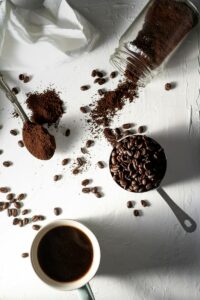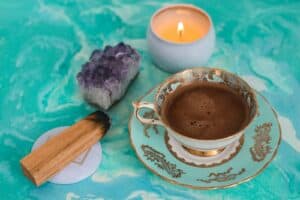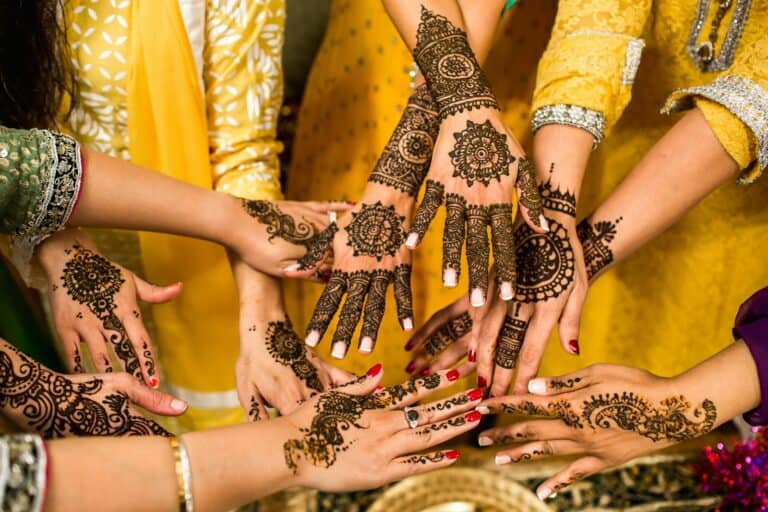Diving into the significance of cocoa rituals unveils a fascinating journey through time. The Maya’s reverence for cacao, evident in their art and ceremonies, has transcended centuries, maintaining its cultural and spiritual importance. Let’s explore the mystical world of Mayan cacao rituals, where tradition and spirituality meet the profound essence of this revered bean.
Imagine stepping into the ancient Mayan world, where the rich aroma of cacao fills the air, signaling the presence of something far beyond a simple bean. Cacao, to the Maya, was not just a crop; it was a bridge to the divine, deeply embedded in their rituals and daily life.
The Significance of Cocoa Rituals
In exploring the depth of cacao’s significance to the ancient Maya, it becomes evident that these rituals were far more than just ceremonies. They were a vital link between the earthly and the divine, a profound expression of cultural identity and spiritual beliefs. For the Maya, cacao wasn’t merely a crop; it was a sacred gift from the gods, believed to have been bestowed upon humans to foster connection, both spiritually and socially.

Cacao ceremonies played a pivotal role in Mayan society, marking significant events and transitions. From birth celebrations to marriage rituals and funeral rites, cacao was a constant, symbolizing life, fertility, and rebirth. These ceremonies weren’t just about consumption. They were intricate rituals involving prayers, music, and offerings, all designed to invoke the divine presence and secure blessings for the community.
The chemical composition of cacao itself might shed light on why it was so revered. With natural chemicals that enhance mood and promote well-being, like anandamide and tryptophan, it’s plausible to suggest that the Mayans recognized, perhaps intuitively, the profound effects cacao had on their physical and emotional state. This connection between the spiritual and the corporeal, facilitated by cacao, underscores the multifaceted significance of these rituals.
Aids in the production of serotonin and melatonin, enhancing mood and relaxation
Moreover, the inclusion of cacao in art and pottery serves as a testament to its central role in Mayan culture. By featuring cacao in their creative expressions, the Maya immortalized their deep respect and love for this sacred bean, ensuring that its significance would be recognized for generations to come.
Today, the resurgence of cacao ceremonies, especially in communities tracing their lineage back to the Maya, signifies a renewed interest in connecting with ancestral wisdom. These modern renditions serve not just as a nod to tradition but as a living bridge to the past, allowing participants to engage in a shared experience that transcends time.
The Origins of Cocoa Rituals
As I delve further into the mystique surrounding cocoa rituals, it’s clear that understanding their origins is crucial. These practices aren’t just a part of history; they’re a profound testament to the enduring connection between cultures and the natural world. Let’s journey back in time to explore the roots of these fascinating rituals.
Ancient Mesoamerican Civilization
The story of cocoa, or drinking cacao as it was traditionally known, begins with the ancient civilizations of Mesoamerica. The Mayans and the Aztecs stand out for their deep reverence for this sacred bean. Cacao was cultivated and celebrated by these cultures for nearly three thousand years, signifying its immense value. It wasn’t merely a crop; it was a pivotal element in religious, social, and economic life.

For the Mayans, cacao trees were gifts from the gods. They believed these trees sprang from the divine, bridging the earthly and the celestial. In contrast, the Aztecs valued cacao so highly that beans were used as currency and as offerings to their deities. The famous Aztec ruler Montezuma II was said to consume cacao in vast quantities, underlining its importance in elite circles.
These civilizations developed intricate rituals centered on cacao consumption, often combining it with spices to create a potent brew. This wasn’t just a physical nourishment but a spiritual one, facilitating communions with the divine and marking significant life events.
Spiritual and Cultural Importance
The spiritual and cultural resonance of cocoa rituals in ancient Mesoamerica cannot be overstated. Cacao was intertwined with creation myths, signifying life, fertility, and rebirth. Its consumption during rituals was believed to open hearts, release blocked emotions, and tether communities to the divine cosmic order.
Ceremonies often involved prayers, music, and dance, with cacao serving as the sacred conduit through which the divine could be accessed. These rituals allowed participants to journey inward, reaching states of inner clarity and elevated consciousness empowered by the plant’s natural chemicals like anandamide, known as the bliss molecule, and tryptophan, a precursor to serotonin.
Interestingly, cacao’s association with female deities and energies highlighted its nurturing, life-giving qualities. Descriptions of “Mama Kakao” in healing circles underscore the understanding of cacao as not just a plant, but a sentient ally offering wisdom, protection, and connection to Earth energies. This perception fostered a holistic approach to well-being, recognizing the interdependence of physical, emotional, and spiritual health.
Through these rituals, ancient Mesoamericans celebrated the cycles of life and the bounties of nature, encapsulating a profound respect for the earth that provided them with such a precious resource. Today, as we witness a global resurgence in cacao ceremonies, it’s a poignant reminder of the timeless quest for connection, balance, and harmony with the natural world.
The Role of Cocoa in Rituals
Cocoa, or cacao as it’s often referred, hasn’t just been a treat to satisfy the palate throughout history; it’s carried a profound spiritual significance. I’ve been deeply fascinated by how this humble cacao bean shaped and was shaped by spiritual practices.
Offering to the Gods
Ancient civilizations like the Mayans and Aztecs held cacao in high esteem, so much so that it became their crucial own cacao ceremony offering to the gods. The belief was that cacao was a divine gift; thus, returning it to the gods in the form of offerings was an act of respect and reverence.
I found it intriguing that cacao beans, ceremonial cacao recipe were used not only as a medium of exchange but also as a sacred offering. This dual value underscores the profound significance cacao held in these societies. It was fascinating to learn that during certain ceremonial cacao ceremony, cacao was directly offered to the gods, symbolizing a sacrifice aimed at appeasing and earning their favor.
Connecting with the Divine
The ritual consumption of cacao was believed to facilitate a direct connection with the divine. Such ceremonies were not just about ingesting a beverage; they were deeply spiritual experiences where participants could engage in communion with higher powers.
This spiritual aspect was exacerbated by the physical effects of cacao, which includes mood-enhancing chemicals like theobromine. This dual effect of physical stimulation and spiritual connection made cacao an essential element in rituals aiming to elevate participants to a transcendent state. I’ve realized that these ceremonies weren’t just religious formalities; they were gateways to experiencing a profound connection with the divine elements believed to govern life.
Enhancing Spiritual Experiences
Cacao’s role in enhancing the spiritual experience of rituals cannot be overstated. The effects of cacao on the human body, including increased blood flow and heightened senses, contributed to more intense spiritual experiences. During rituals, cacao was often combined with herbs and spices, which not only added to the flavor but also to the potency of the experience.
The preparation and consumption of this sacred brew were done with careful attention to detail, ensuring that every aspect of the ceremony facilitated a deeper spiritual engagement. It’s clear that cacao was much more than a mere ingredient; it was a catalyst for spiritual awakening and bonding among communities.
In delving into the historical and spiritual context of cacao, I’ve come to appreciate its role in rituals not merely as a tradition but as a profound avenue for spiritual exploration and communal bonding.
How Cocoa Rituals Are Practiced Today
Exploring the practices of cocoa rituals in contemporary times has brought me fascinating insights into both preservation and evolution. The way these rituals are performed today undeniably illustrates the enduring significance of cocoa in spiritual and communal gatherings.
Indigenous Communities
In indigenous communities, the sanctity and intention behind cocoa rituals remain deeply rooted in the traditional ways passed down through generations. These communities continue to treat cocoa as a sacred gift, highlighting its role as a connector to the divine and as an essential element in fostering community bonds. My research and conversations with members from these communities have revealed several key components that define their cocoa ceremonies:
- Purity of the Cocoa: The cocoa used is often ceremonial grade, organically and ethically produced, ensuring it retains its spiritual properties.
- The Ritual Process: Ceremonies are carefully planned and executed with specific prayers, songs, and sometimes dance, aimed at invoking the spirits and strengthening communal ties.
- Intention Setting: Before consuming the cocoa, participants set personal and collective intentions, reaffirming the spiritual engagement of the ritual.
Modern Interpretations
The resurgence of cocoa rituals in modern cultural contexts has intrigued me the most. People from different walks of life are now embracing these ceremonies, blending traditional practices with contemporary spiritual exploration. Here’s how modern interpretations stand out:
- Accessibility: Ceremonial cocoa is now more accessible, with workshops and sessions held in urban settings, bringing ancient traditions to modern seekers. These modern cocoa rituals sometimes intersect with other spiritual practices, such as virtual chocolate tastings, which provide a unique, immersive experience.
- Innovation and Inclusion: While respecting the essence of the rituals, modern ceremonies incorporate elements from various spiritual practices, making them inclusive and relevant to a broader audience.
- Community and Personal Growth: Beyond spiritual connection, these rituals serve as platforms for community building and personal development. Many participants report profound experiences of healing and insight, much like those found in celebrity-endorsed chocolate events, which also blend tradition with modern appeal.
In both indigenous and modern settings, the essence of cocoa rituals — connection, reverence, and transformation — continues to thrive. It’s fascinating to observe how a practice so ancient remains vital and adaptable to the needs and contexts of communities today, much like how ancient chocolate civilizations have influenced modern chocolate traditions.
The Benefits of Cocoa Rituals
Delving deeper into the significance of cocoa rituals, it’s imperative to understand the multifaceted benefits they offer. Beyond their historical importance, these rituals serve as a bridge to enhanced wellness in the modern day.
Stress Relief
In a world where stress seems to be an ever-present companion, cocoa rituals emerge as a sanctuary of calm. The process of preparing and consuming ceremonial-grade cacao in a ritual setting is in itself a meditative practice. The aroma, the texture, and the very act of stirring the cacao concoct a sensory experience that initiates relaxation.
Ceremonial cacao contains anandamide, sometimes referred to as the bliss molecule, which plays a role in mood regulation and the feeling of happiness. This biochemical interaction can significantly reduce stress levels and promote a sense of well-being. For me, participating in a cocoa ceremony means stepping into a realm of tranquility, momentarily leaving behind the rush and worry of daily life.
Emotional Healing
At the heart of cocoa rituals lies the potential for profound emotional healing. This ancient practice acts as a conduit for opening the heart and fostering a deep sense of introspection. Participants often report experiencing a cathartic release of emotions, facilitated by the cacao’s ability to dissolve emotional blockages.
Sharing this experience in a group setting amplifies the effect, creating a collective energy of healing and empathy. My encounters with cocoa ceremonies have taught me the power of vulnerability and the strength found in community. It’s a reminder that healing is not just an inward journey but also a shared endeavor.
Increased Energy and Focus
One of the most immediate benefits I’ve noticed from participating in cocoa rituals is a significant boost in energy and focus. Unlike the abrupt jolt provided by caffeine, the energy derived from ceremonial cacao is gentle and sustained. This is attributed to the presence of theobromine, a natural stimulant that offers a milder, more enduring energy boost without the common downsides of caffeine.
Moreover, this enhanced state of alertness is accompanied by an increased clarity of thought and creativity. During cocoa rituals, I find myself more attuned to my inner thoughts and more capable of deep, meditative focus. This heightened state of mental clarity and attentiveness is invaluable for personal growth, making cocoa rituals not only spiritually enriching but also intellectually stimulating.
Delving into the world of cocoa rituals has opened my eyes to the profound impact they have on spiritual and social bonds. It’s clear that the ancient practices of the Mayans and Aztecs have transcended time, still resonating deeply in both indigenous and modern contexts. The purity of the cocoa, the sanctity of the ritual, and the power of intention setting come together to create experiences that are not only healing but also deeply connecting.
The benefits, from stress relief and emotional healing to enhanced focus and energy, underscore the multifaceted significance of these rituals. They’re not just about the physical act of consuming cacao but about the entire journey of preparation, participation, and reflection.
As I reflect on what I’ve learned, it’s evident that cocoa rituals offer a unique blend of spiritual enrichment and intellectual stimulation, making them a valuable practice for anyone looking to deepen their connection to themselves and their community.
Frequently Asked Questions
Why is cocoa called the food of the gods?
Cocoa was considered divine by Mesoamerican civilizations. An old Toltec myth credits Quetzalcoatl, the feathered serpent god, with planting the first cacao trees. Both the Maya and Aztec cultures believed that chocolate was a precious offering from the gods, often attributing it aphrodisiac qualities and associating it with sacred rituals.
What is the spiritual meaning of ceremonial cacao?
Ceremonial cacao fosters grounding, heart-opening qualities, and is used in rituals to elevate mood, vitality, heart, and intuition. The goal is for participants to connect deeply with themselves and their communities, setting personal and communal intentions for spiritual growth and healing.
How does ceremonial cacao make you feel?
Consuming ceremonial-grade pure cacao or with cacao butter may evoke feelings of expansiveness, bliss, and a profound connection to oneself, others, and the broader universe. It’s common to experience an inspired state, heightened intuition, and elevated levels of consciousness during and after a ceremony.
What happens after a cacao ceremony?
Post ceremony, participants are encouraged to share experiences, insights, and emotions in a sacred communal space. This sharing acts as a process of integration, fostering a collective healing and reflective journey. The ceremony often concludes with group reflections, aimed at healing both individuals and Mother Earth.
Why was cacao a sacred food?
For the Aztecs, cacao held significant religious importance, believed to be a divine gift from the god Quetzalcoatl. The cacao tree was revered as a bridge between heaven and earth, embodying a sacred connection to the divine and playing a central role in spiritual rituals.
- The Therapeutic Benefits Of Chocolate Making Workshops
- The Significance Of Cocoa Rituals
- The Science Of Milk Chocolate
- The Psychology Behind Gifting Chocolate
- The History Of Chocolate
- The Benefits Of Single Origin Chocolate
- The Art Of Chocolate Packaging Design
- The Allure Of Vintage Chocolate Advertisements
